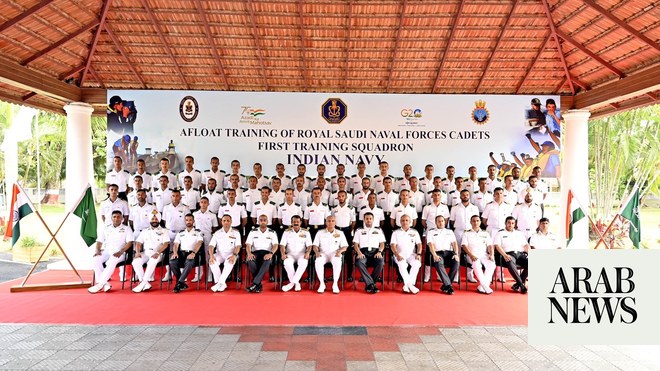
Their budget allocation aims to diversify defense imports, encourage local arms production
RIYADH: In view of growing geopolitical tensions in the region and threats of terrorism, countries in the Gulf Cooperation Council, particularly Saudi Arabia and the UAE, are bolstering their defense expenditure.
Their budget allocation aims to diversify the defense imports and encourage local arms production.
Saudi Arabia will spend SR171 billion ($46 billion) on its military in 2022, according to the Kingdom’s budget statement.
The Kingdom has already met most of its military demands and is now building its local military production capability.
According to the US-based International Trade Administration, its neighbor, the UAE, is among the top 15 defense spenders globally and was the fifth-largest arms importer worldwide in the period 2009–18.
The UAE spent $19.8 billion on defense in 2020. This figure represents 5.6 percent of GDP and makes it second to Saudi Arabia at the regional level. Between 2010 and 2019, the country spent nearly 15-16 percent of its annual defense budget on foreign contractors.
The consolidation was especially evident in 2021 when the UAE Armed Forces signed 86 deals worth $5.7 Billion at the International Defense Exhibition and the Naval Defense Exhibition.
“The GCC countries spend over $100 billion on defense,” said Haroon Sheikh, Partner with Strategy& Middle East, a leading think tank affiliated to the PwC network, in an interview with Arab News.
Earlier, both Saudi Arabia and the UAE depended heavily on the US, with which they hold defense cooperation agreements. Around 80 percent of the Kingdom’s defense purchases are allocated to the US. Washington currently has about $126.6 billion in military sales with Saudi Arabia.
But that seems to be changing. Last August, Saudi Arabia, and Russia signed a military cooperation agreement in Moscow. The agreement’s main objective was to develop joint military cooperation between the two countries. In February, the UAE announced plans to buy a dozen Chinese L-15 aircraft.
“Diversification of defense imports is not the only means used by the GCC to bolster its military industry. There is also an increasing thrust on localization of military expenditure,” says Sheikh while adding that the domestic military spends are in the range of 5-15 percent and increasing.
As part of the localization process, the GCC nations are actively putting regulations, incentives, and investments to build domestic defense capabilities. There is also a growing impetus towards empowering small and medium enterprises, making them partners in the growth of the defense industry.
“The process of building localization capabilities typically starts with maintenance, repair, and operations, followed by upgrades and modifications of equipment. Such activities create an ecosystem of small and medium-sized enterprises, and in turn, build the manufacturing and design capabilities of the region,” points out Sheikh.
Under the Vision 2030 diversification program, Saudi Arabia aims to local 50 percent of its military procurement, to which it has earmarked around $10 billion. Authorities in control of this vast transition are the General Authority for Military Industries, known as GAMI, and the Saudi Arabian Military Industries, SAMI. Those two act respectively as the military industry regulator and the country’s contractor with foreign or local companies.
In the UAE, EDGE, which includes 25 military entities including the Emirates Defense Industries Co., Emirates Advanced Investments Group, Tawazun Holding, and others, are responsible for purchases and growing localization efforts of the country’s military industry.
PwC believes the GCC is making great progress in the defense industry.
Today, GCC militaries have supply chains that are more digitized and automated than before thanks to improved contracting mechanisms that deliver efficiency and effectiveness, Sheikh explained.
“That is because GCC militaries have been investing in logistics and supply chain modernization over the years,” he added.
“The GCC countries are building domestic defense capabilities. The region currently hosts MRO, aircraft component manufacturing, land vehicle assembly, shipbuilding, advanced electronics, and the capabilities to produce unmanned aerial vehicles, ammunition, and missiles,” Sheikh emphasized.
The region’s ambitious military projects fall within an international arms race, where the US remains the dominant player. David Des Roches, professor at the Near East South Asia Center for Strategic Studies, the National Defense University in Washington told Arab News that the usual military development powers — the US, UK, Russia, Germany and Israel, are leaders because of their advanced scientific and research culture.
However, Munira Mustaffa, a non-resident fellow at Newlines Institute for Strategy and Policy, in Washington, DC, told Arab News that market outliers are gaining traction. “The Barracuda Camouflage System developed by Saab (Sweden) is an example of the application of new technology with old to protect vehicles, equipment and personnel. The UK firm 4GD is recognized as the leading exponent of Immersive Training Technology, allowing troops to rehearse Close Quarter Battle with realistic sounds and targets, while being monitored by an Operations Room and integrated with supporting fires such as snipers.”












